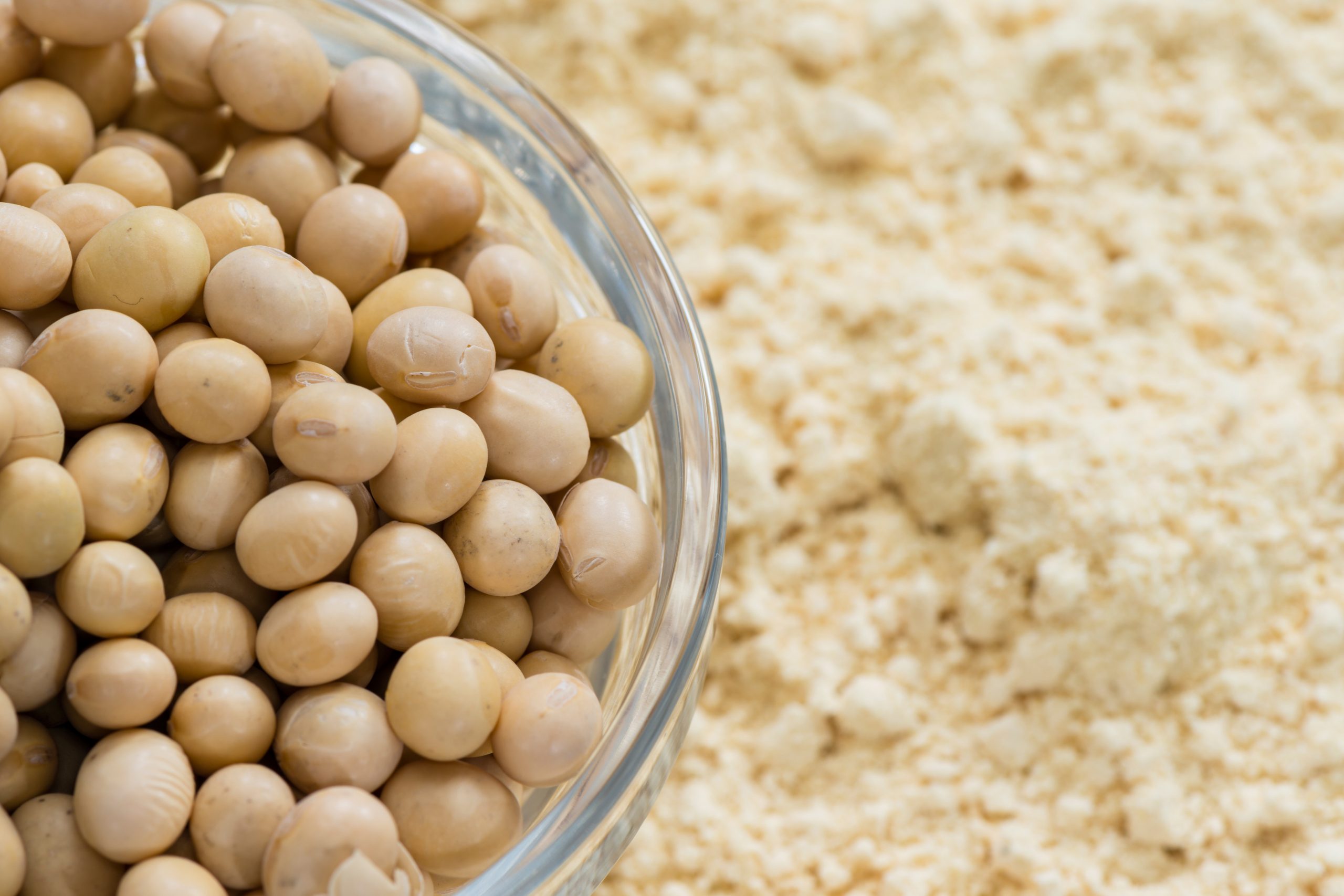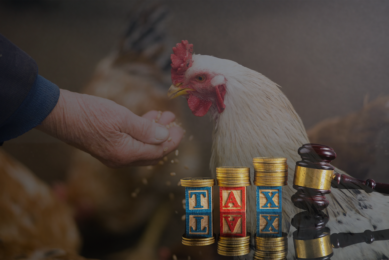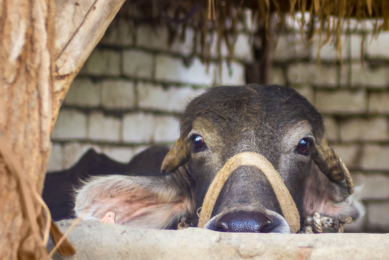Acute shortage of soybean meal in Russia

While struggling to produce enough soybeans to meet domestic demand, Russia’s heavy reliance on imports has led to an inevitable consequence on cost and supply. With acute shortages looming, what steps are being taken to fill the blanks?
Imports account for nearly 43% of soybean supplies in Russia as the country fails to produce enough to meet the demand of domestic feed mills. Speaking at a recent governmental meeting in Moscow, Vladimir Volik, the head of the market regulation department of Russia’s Agricultural Ministry, estimated that the country’s demand for soybean meal is 5 million tonnes per year, adding that the dependence on imports raises the costs of compound feed and puts a financial burden on livestock producers.
Soybean producers encouraged to increase production
Volik indicated that the Ministry is currently taking some steps to encourage soybean producers to increase production performance. In 2016, Russia ramped up planted acreage for soybeans by 100,000 ha to 2.22 million ha and managed to substantially increase average yield, bringing it from 1.3 tonnes per ha in 2015 to 1.48 tonnes per ha in 2016. As a result, the soybean harvest last year was a record breaking 3.1 million tonnes.
Soybean processing plants exceed soybean production
However, Russia’s soybean market is still suffering the problem of short supply and the Ministry believes that the best way forward in this situation is to further expand the acreage area, Volik said. Russia now faces a paradoxical situation, that the combined capacity of soybean-processing plants in the country exceeds the total volume of soybean production. According to the Ministry, in 2016, Russia’s plants had the capacity to process 4 million tonnes of soybeans, and this figure will no doubt grow in the future.

Pressure on soybean imports from anti-GMO campaign
Last year the import of soybean meal in Russia was also under attack. Dmitry Rylko, the general director of Russia’s Institute of Agricultural Market Studies (IKAR), explains that since July, direct import supplies of soybean meal to the country had been blocked resulting in price increases rising to 3-4 roubles (US$ 0.05 – 0.07) per kg higher than average global prices. The pressure on imports remains, although in the past few months the prices have fallen slightly as domestic farmers collected a good harvest, Rylko added.
Soybean imports faced added heavy pressure amid Russia’s anti-GMO campaign. At the end of June 2016 Russia’s State Duma, the lower chamber of the country’s Parliament, passed the bill, fully prohibiting both cultivation of genetically modified crops within Russia and the imports of GMO seeds. In addition, importers of GMO-products are obliged to register accordingly. This brought a real storm to the market, in particular targeting Russia’s largest importer of soybeans and manufacturer of soybean meal, the agricultural holding GK Sodruzhestvo who accounts for more than 50% of the country’s soybean meal market. GK Sodruzhestvo imports soybeans from South America, primarily from Brazil to the amount of 2.7 million tonnes per year.
In the period from October to December 2016 Russia’s veterinary watchdog Rosselhoznadzor filed 17 legal claims against GK Sodruzhestvo, saying that during inspections GMOs had been repeatedly identified in batches of imported soybeans. Rosselhoznadzor placed several fines on GK Sodruzhestvo, forcing the company to temporarily stop production supplies.
Also read: 2017 Alltech Global Feed Survey: The international feed tonnage has exceeded 1 billion metric tonnes for the first time.
Full import replacement promised by 2020
Back in 2014, Russia’s Agricultural Ministry adopted a programme for the development of the country’s soybean industry with the main target to increase the production performance to 7.17 million tonnes by 2020. This would allow Russia’s market to reach almost full self-sufficiency.
Soybean, however, is not a natural product for Russia and at least 50% of the country’s territory is not fit for its cultivation due to the harsh climate. However, even despite this, domestic farmers theoretically can boost a volume of production to 30–50 million tonnes per year, Alexander Sanakin, the president of Russia’s Soybean Union, has estimated, adding that the possible growth of internal production performance might spur the demand for soybean meal in the country to 12 million tonnes per year. Sanakin also claims that Russia has the ability to become the world’s largest manufacturer of non-GMO soybeans in the future.
Plans to increased production in Black Earth belt
Currently, most soybeans in Russia are produced in the Far East federal district, but over the past decade the Central federal district has increased production by 550% to 867,000 tonnes, or 30% of Russia’s total production. In the coming years the Central federal district will more than double its soybean production volume and as a result move to the first place in the country. In particular, soybeans will be grown in the so-called Black Earth belt, including Kursk, Lipetsk, Voronezh and Belgorod Oblasts, where farmers have sufficient resources to obtain high yields, Sanakin added.
Also read: Russia continues to increase overall volume of feed production. But this is not the case for all animal species.
Quality of domestically grown soybeans
According to Sanakin, Russia’s Far East farms have yield indicators of 2.2–5.0 tonnes per ha with the protein content between 37-45%. However, Sergey Sokolovsky, the marketing department head of GK Sodruzhestvo argues that the average yield of soybeans in the Far East federal district is 1.3 tonnes per ha, while in the Central federal district this is only 1.5–1.7 tonnes per ha. In addition, Russia’s soybeans have quality problems, for example, soybeans grown in Paraguay contain 35.6-36.4% of crude protein with an oil content rate of 21.5-22.5%. In comparison, Russia’s soybean from the Central federal district has a protein content of 29-33% and the oil content is 18.5-19%, data of GK Sodruzhestvo showed.
With such protein and oil content it is difficult to produce a high-quality soybean meal required for modern crosses of poultry and high-productivity pig breeds, Sokolovsky said. In the Far East federal district, the quality of soybeans is slightly better with 34.8% of crude protein content and 20% of oil content, but logistics for delivery of soybeans from the eastern regions to the central part of the country, where most processing capacities and feed mills are based, in fact makes such supplies non-competitive on price, he added.
Deep-processing segment in its infancy
In the future Russia’s soybean industry could benefit from the production of soy protein concentrate. Currently, only GK Sodruzhestvo is engaged in the deep-processing of soybeans with the use of water-alcohol extraction technology. According to Sokolovsky, the company is manufacturing nearly 50,000 tonnes of soy protein concentrates per year in the Kaliningrad plant and the most part of this production is meant for export.
Even though demand for soy protein concentrate is still rather weak in Russia, two plants for the production of soybean isolates are scheduled to be commissioned in 2017. One, with the capacity of 10,000 tonnes per year will be located in the Far East federal district and another one with 12,000 tonnes per year in Central Russia. However, even if production were to increase in this segment, Sokolovsky predicts tough competition from Chinese manufacturers.











